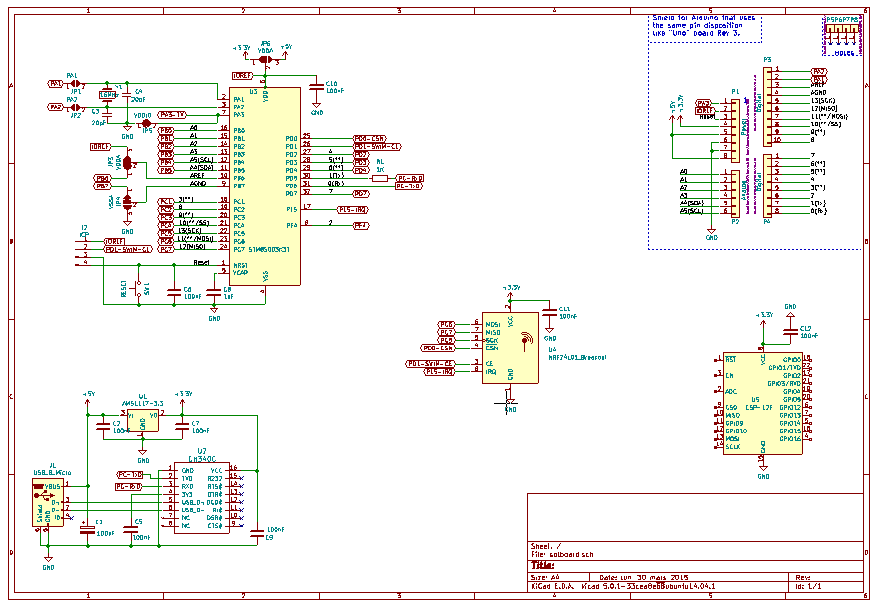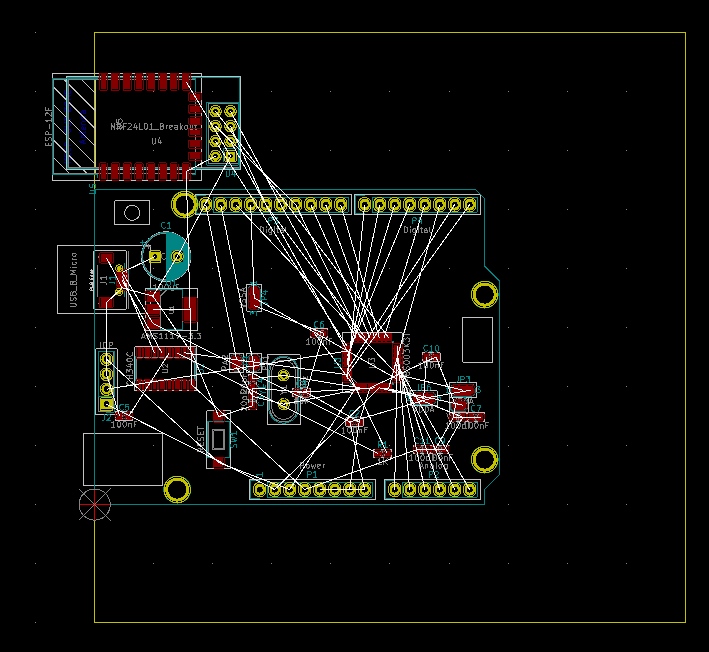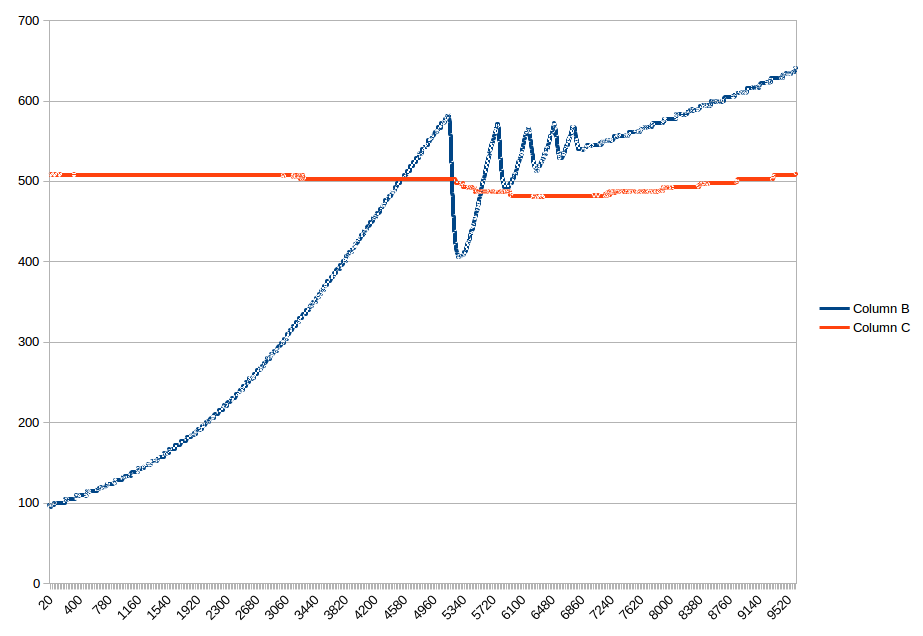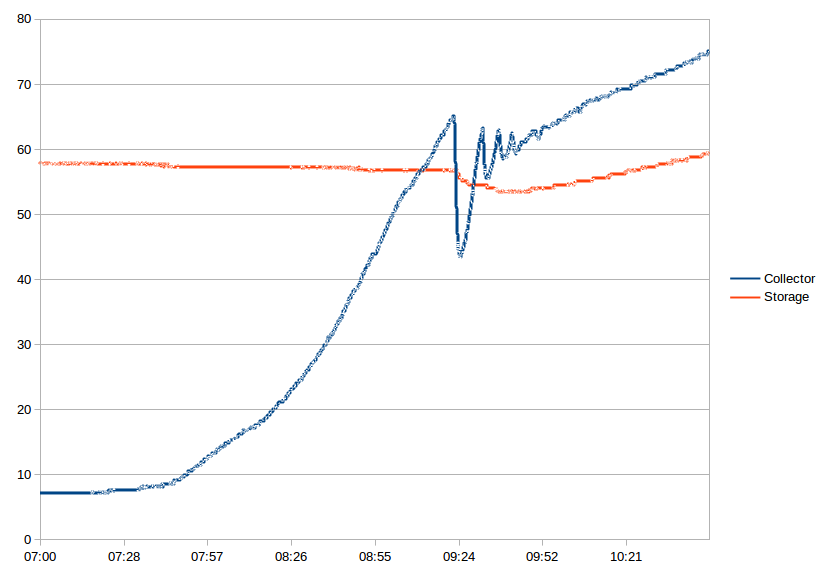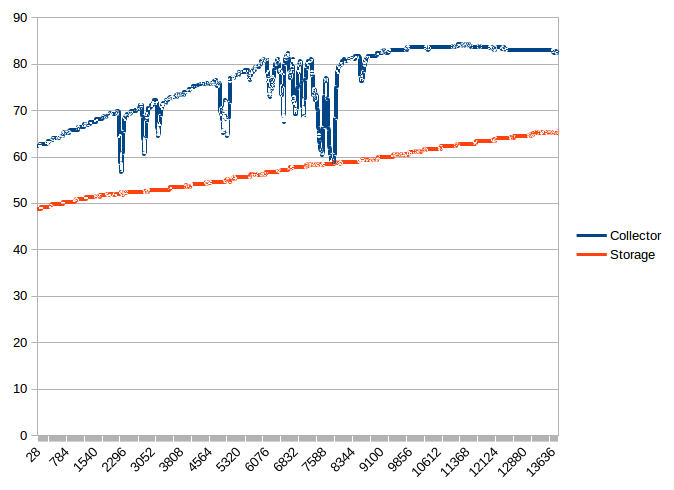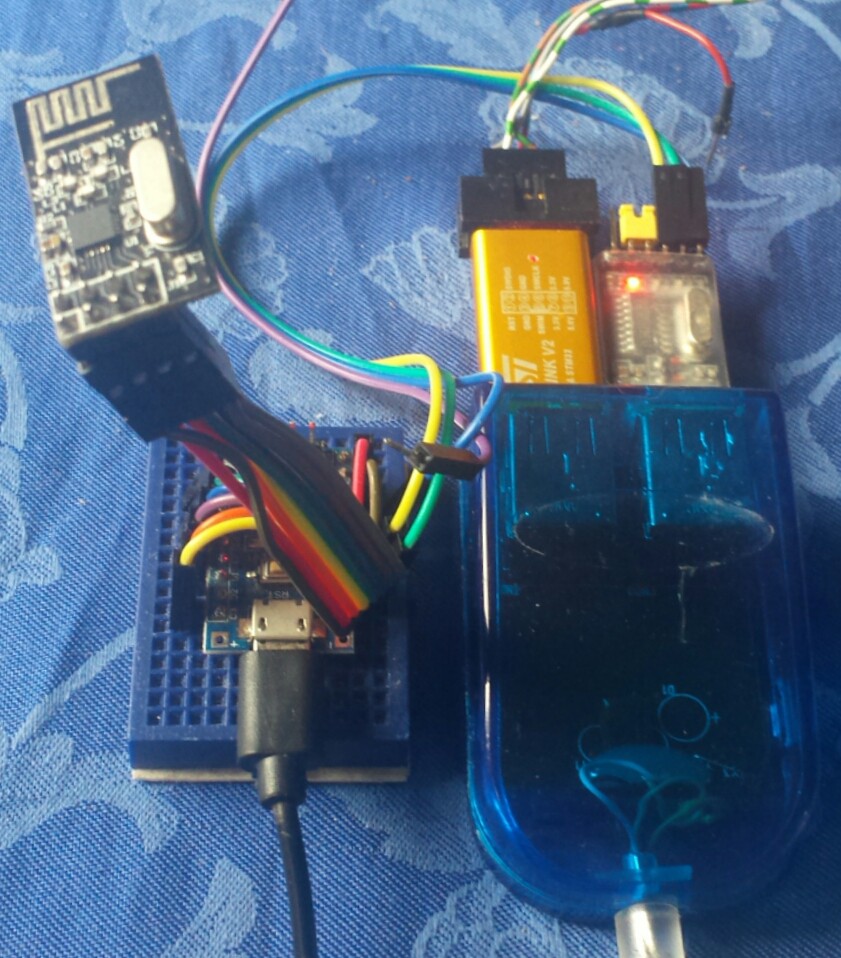-
Looking for an enclosure
11/10/2018 at 21:12 • 0 commentsThe PCB core design now fits many use cases. It's time to think how to source cheap enclosures. On the usual Chinese hobbyist sourcing sites the G311/G212 box with dimensions 115x90x55mm³ is widely available. It's a nice fit for a 100x80mm² PCBs (minus a few cm²).
![]()
Such a boxes are currently on offer less than $3.50 with "free shipping". A preliminary check of the "mechanical engineering constraints" looks promising (e.g. M16 cable glands for mains voltage and pump wiring fit in).
This box is maybe also a good fit for other control and monitoring applications.
-
Starting to Design the SolBoard
10/28/2018 at 20:43 • 0 commentsI started designing the core around STM8Sx003K3T6 (or alternatively STM8S105KxT6), and since I'd like to have a board for all kinds of "remote stuff" I decided to add an Arduino style connector, an ESP-07S/ESP12F socket, a CH340 USB/serial converter, and other goodies.
I decided to assign GPIOs to the Arduino header so that using cheap Arduino Shields is possible (Arduino Playground's Shield Pin Usage table was very helpful). Of course, one-to-one GPIO grouping isn't possible but a bit of glue code can fix that.
![]()
While using Arduino Shield shall be possible, the SolBoard should make best use of the 10x10cm² panel size that budget PCB houses "hand out" to the masses. I hope to find the right mixture of features and pragmatism so that my solar controller board can also be used as a prototype board or for other logging or control use cases.
The general layout of the board is this:
- East:
- RF, USB and control inputs,
- West::
- SSR, power supply and heavy-duty connectors
- North and South:
- 5mm spacing for a 100mm wide "aluminum profile case",
- maybe a small breadboard area
![]()
There are now some things to decide:
- Which power supply module to use?
- How to design surge and overload protection?
- One or two SSRs?
- How to do milling for insulation?
- Which type of ESP8266 and nRF24L01 module (e.g. external or PCB antenna)
I would be happy to receive some advice from the community!
- East:
-
Learning to know cause and effect
09/27/2018 at 09:30 • 0 commentsYesterday I mentioned a possible "net loss" due to switching on pump: a temperature drop in the storage. I was guilty of jumping to a questionable conclusion.
This what I observed this morning:
![]()
If you compare it to the image in yesterday's log, the effect is even more pronounced. The main difference is that more hot water had been consumed yesterday evening. I now offer a different explanation: the sensor is above the heating coil in the storage, and (more heavy) cold water is below the point ofmeasurement. By activating the pump, the coil exposes the (warmer) water above to a lower temperature. The net effect is that cold water at the base of the storage gets heated.
-
Things are getting interesting once you have data!
09/26/2018 at 10:31 • 0 commentsThis is an interesting finding: starting up the solar heating circulation pump in the morning comes at a cost: the temperature as measured above the heater coil in the storage initially drops by several degrees [°C], and it takes full hour of late September morning sun for it to return to the initial value. This could mean that when the sky is cloudy starting the heating can be a net loss!
![]()
Of course, this also shows potential for innovation:
- in order to offset the energy needed to heat up the cold transfer fluid in pipes from roof to basement, a much higher threshold for the difference between storage and collector can be used after extended inactivity of the pump (the threshold effective in the diagram is 8°C/5°C on/off )
- use weather forecast information from the Internet to decide if a positive effect of using the solar collector is to be expected (which, based on these observations, is unlikely on a cloudy November day)
In any case, I wouldn't have thought that a system this simple can show interesting behavior!
-
Wireless data transmission: day one
09/25/2018 at 09:12 • 0 commentsOne of the effects of having a wireless link to a solar water heating is that one can ponder about technical properties one would never have known they exist, e.g. initial temperature drop when the system starts up on a sunny morning, heat transport limitations or not enough noise to the sensor signals. It's good to know that none of that really matters - when the sun shines heat will be transported, and no optimization can replace sunshine :-)
![]()
The graph shows the collector and the storage temperature (in °C). The time span is roughly from 11:30 to 15:20 CEST (25/Sep/2018, Southern Germany, 5m² collector, 300l storage). The effect of clouds is easily visible. The storage temperature in the early morning was about 45°C, at the time of writing (15:40) it was 66°C.
-
Wireless transmission of Solar Collector and Storage Temperature via nRF24L01+
09/24/2018 at 14:05 • 0 commentsI combined the simple solar controller code gist with the PingInt code from the stm8ef-nRF24L01 repository into a solar-nrf24 gist. This is experimental but for now it works.
The output from Pong looks like this:
Solar 710 556 0 96 Solar 710 556 0 96 Solar 710 556 0 96 Solar 710 556 0 96 Solar 710 556 0 96 Solar 710 556 0 96 Solar 710 556 0 96 Solar 709 556 0 96The text "Solar" and temperature from the collector and the storage sensors (by 10) are transferred as plain text.
This is what I use as a nRF24L01 receiver:
![]()
All relevant links are in the Gist comment.
 Thomas
Thomas
